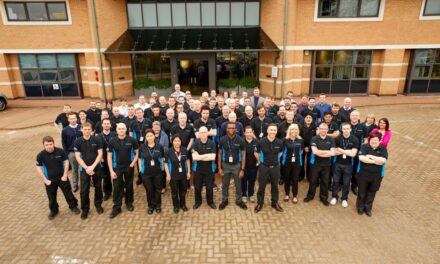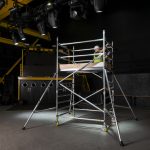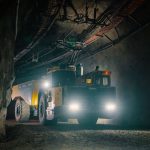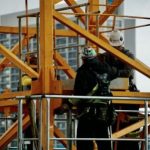When you think of working at height, you would be forgiven for initially picturing rooftop working – but working at height in interior applications pose just as many potential risks. Here, HCL Safety’s UK sales manager, Stuart Pierpoint, highlights the key considerations of height safety system installation and how to work safely in interior applications.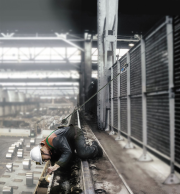
Working with MEWPs
While the physical installation of interior height safety systems remains relatively straightforward, gaining access can be challenging. It can sometimes be difficult, for instance, to find anywhere to fix systems to, which is why installations typically tend to be carried out via machine access. Mobile Elevating Work Platforms (MEWPs) carry their own potential risks, especially when used inside in what can be busy environments. This is why it’s so important to carry out all relevant risk assessments, as per the Work at Height Regulations 2005, and choose the right MEWP for the job. Conducting all necessary assessments and choosing the correct equipment will help ensure that all risks are mitigated, according to the Provision and Use of Work Equipment Regulations 1998 (PUWER).
Careful planning and consultation
While the safety of the end-user should always come first, the functionality and usability of a height safety system must always be considered. In aircraft hangars, for instance, steel may be running in one particular direction, but an aircraft will likely be at a different orientation. This can be challenging, which is why careful planning and consultation with the principal designer and/or site/health and safety manager (or equivalent) is crucial. This will help ensure that systems maintain the highest level of safety while remaining practical for the end-user.
Following a full site survey and risk assessment, the installer, structural engineer and, on occasion, the principal designer, will identify the most suitable point from which to anchor. Ceiling spaces can often have many other services attached to them, so be sure that the fixing point is not only capable of withstanding the load of a fall, but also easily accessible and clear of all other services.
A quality installer will provide the structural engineer and principal designer with all necessary load calculations so that guidance can be provided regarding whether the material / structure is strong enough. Internal height safety systems are often anchored to steel works.
Beware of the environment – are you using the right materials?
Height safety systems – like anything else – are at the mercy of the elements and the atmosphere they are exposed to. In leisure centres with swimming pools, for example, the chlorine can degrade stainless steel inside-out which means you may only see that it’s corroding once it’s close to failing. Steelworks can be similarly harsh on height safety systems. Installers therefore need to be mindful of the materials they are using in relation to the fabric of the building and any external elements that may potentially impact performance. Regular inspection and continued maintenance of equipment following installation is of course always crucial, regardless of the conditions. But in particularly harsh, or potentially corrosive, environments, more frequent inspection may be necessary.
Choosing height safety solutions for interior applications
Whether working in exterior or interior applications, in warehouses, steelworks, train or bus depots, theatres, crane gantries or aircraft hangars, the principles of working at height safely remain the same: If at all possible, eliminate the risk entirely and avoid it. If work at height is unavoidable, then choose the right work equipment and select collective measures to help prevent falls (such as guardrails and working platforms). Implementing collective measures and even fall restraint systems can, however, be challenging when it comes to interior applications which means that fall arrest systems are often used. Training is of course essential for all levels of working at height but working in fall arrest puts an even greater impetus on confidence and competency gained via extensive and ongoing quality training.
Rescue plans: it’s your responsibility
Importantly, when working with a fall arrest system, together with all relevant PPE, a rescue plan, by law, must be in place. Do not rely only on the emergency services – it is your responsibility to implement a rescue plan. Furthermore, any delay in the emergency services arriving on site could be critical for the worker. Assistance in the development and implementation of a comprehensive rescue plan is a typical by-product of top-quality training, so be sure to partner with a reputable training provider.
